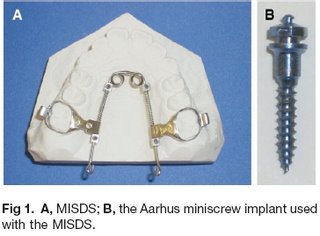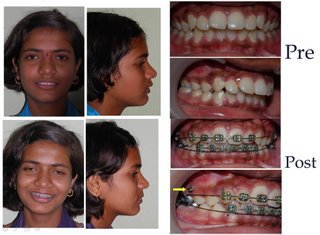Imaging, causes of Halitosis, Ceph not needed and implant stability
The Council of European Dentists (CED) has just published a comprehensive guide on the training and work requirements for dentists and other dental professionals who want to practise in other EU member states.
The latest edition of the EU Manual of Dental Practice describes the legal and ethical regulations, dental training requirements, oral health systems and the organisation of dental practice in 32 European (EU and EEA) countries, including Croatia, which is due to join the EU next year.w Guide For Dentists Who Want To Work In Europe, For full Story and Links CLICK HERE
The influence of cephalometrics on orthodontic treatment planning ?
Peter G. Nijkamp et al EJO Dec 2008
Since its introduction, cephalometrics, i.e. cephalometric radiography and analysis, has been used for orthodontic treatment planning. However, the effectiveness of this diagnostic method remains questionable. A randomized crossover study was designed to assess the influence of cephalometrics in orthodontic treatment planning of individual patients. Diagnostic records of 48 subjects (24 males and 24 females aged 11–14 years) were divided in two stratified groups and assigned to one of two combinations: A, dental casts only, and B, dental casts, cephalometric radiographs, and analysis. The records were presented to 10 orthodontic postgraduates and four orthodontists for formulation of orthodontic treatment plans containing a dichotomous decision regarding the use of a functional appliance (FUNC), rapid maxillary expansion (RME), and extraction (EXTR). The combination of FUNC + RME + EXTR was used as the basis of the outcome measure. Agreement on orthodontic treatment planning using all possible comparisons of diagnostic records of individual patients (AB, AA, and BB) was assessed and overall proportions of agreement (OPA) were calculated for orthodontic postgraduates and orthodontists separately.
Median OPA were 0.60 (AB), 0.65 (AA), and 0.60 (BB) for orthodontic postgraduates and 0.50 (AB), 0.75 (AA), and 0.50 (BB) for orthodontists. Irrespective of the level of experience, neither consistency of orthodontic treatment planning between both combinations of diagnostic records showed a statistically significant difference (P > 0.05) using Wilcoxon signed rank test nor did consistencies and agreement of orthodontic treatment planning after the addition of cephalometrics. It appears that cephalometrics are not required for orthodontic treatment planning, as they did not influence treatment decisions.
Stomach Ulcer Bug Causes Bad Breath
Bacteria that cause stomach ulcers and cancer could also be giving us bad breath, according to research published in the December issue of the Journal of Medical Microbiology. For the first time, scientists have found Helicobacter pylori living in the mouths of people who are not showing signs of stomach disease. More HERERelationship between halitosis and psychologic status
Triple O Nov 2008
Objective: To examine the psychosomatic aspects of patients complaining of halitosis.
Study design
Breath malodor in 165 patients was measured using an organoleptic test (OLT), sulfide monitoring, and gas chromatography. Clinical evaluation included oral examination, OLT, and volatile sulfur compound measurement. The psychologic condition of patients was assessed using the Cornell Medical Index (CMI).
Results
Every item in the CMI questionnaire was negatively correlated with the OLT scores. Nine of 21 subjects (42.9%) diagnosed with pseudohalitosis and approximately 20% of subjects diagnosed with genuine halitosis were considered to be provisionally neurotic. Subjects with pseudohalitosis reported significantly higher physical scores, but not mental scores, than those with genuine halitosis. Subjects with physiologic halitosis showed significantly higher symptoms of depression than those with oral pathologic halitosis.
Conclusion
The psychologic condition of patients complaining of halitosis was associated with the actual degree of malodor and the clinical characteristics.
Influence of bone density on implant stability parameters and implant success: a retrospective clinical study
Background
The aim of the present clinical study was to determine the bone density in dental implant recipient sites using computerized tomography (CT) and to investigate the influence of bone density on implant stability parameters and implant success.
Methods
A total of 300 implants were placed in 111 patients between 2003 and 2005. The bone density in each implant recipient site was determined using CT. The peak insertion torque values were recorded with OsseoCare machine. The implant stability measurements were performed with Osstell instrument immediately after implant placement, 6, and 12 months later.
Results
Of 300 implants placed, 20 were lost, meaning a survival rate of %. 93.3 after three years. The mean bone density, insertion torque and RFA recordings of all 300 implants were 620+/-251 HU, 36.1+/-8 Ncm, and 65.7+/-9 ISQ at implant placement respectively; which indicated statistically significant correlations between bone density and insertion torque values (p<0.001), style="font-weight: bold;">Conclusion CT is a useful tool to determine the bone density in the implant recipient sites, and the local bone density has a prevailing influence on primary implant stability, which is an important determinant for implant success. Full Paper here
Advancements in Digital Imaging
What Is New and on the Horizon? JADA Nov 08
Cone beam computed tomography (CBCT) is a diagnostic imaging technology that is changing the way dental practitioners view the oral and maxillofacial complex. CBCT uses radiation in a similar manner as does conventional diagnostic imaging and reformats the raw data into Digital Imaging and Communications in Medicine (DICOM) data. DICOM data are imported into viewing software that enables the manipulation of multiplanar reconstructed slices and three-dimensional volume renderings. DICOM data also may be used in third-party software to aid in dental implant placement, orthognathic surgery and orthodontic assessment. Full paper here
Got A Headache? It Is Your Dentist, Not Doctor Who Could Fix It!
Headaches, migraines, pain behind our eyes, sinus, and even neck and shoulder pain are all ailments that would warrant a trip to the doctors - that is until now. As Rahul Doshi and Ashish B. Parmar, award-winning cosmetic dentist's from Extreme Makeover and Partners at The Perfect Smile Studios & Academy in the South East, United Kingdom, explain, it could well be your dentist who holds the key to your pain relief.
As the cosmetic dentistry specialists outline, pains such as headaches are often classic symptoms of poor dental occlusion - the way your teeth meet when your jaw bites together. So, instead of popping paracetamol or visiting the GP, harmonising your teeth and jaw joints could affect more than just your smile. More HERE
Women with good teeth earn more money
Women who grew up in communities with fluoridated water earn more than those who didn't. Amazingly, after 60 years of fluoridated municipal water in the United States, the fluoride conspiracy theorists are still out there. From the National Bureau of Economic Research. More HERE
Labels: cephalometrics, europe dentistry, halitosis, implants



